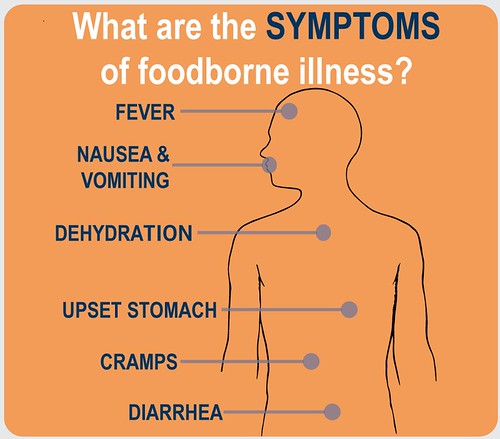Are You Sure It Wasn't Food Poisoning? - USDA.gov
Aug 28, 2017

The United States food supply is one of the safest in the world; however, that doesn't mean our food is free from all pathogenic bacteria. As we celebrate National Food Safety Education Month this September, the United States Department of Agriculture, along with our partners at the Centers for Disease Control and Prevention and the Food and Drug Administration, want you to know that it is possible for your food to be almost completely safe from pathogenic bacteria by following the four basic steps to food safety.
According to the Centers for Disease Control and Prevention, foodborne illness will cause 128,000 hospitalizations, and 3,000 deaths each year.
While not all bacteria present in food products is harmful (in fact, bacterial species are essential in production of delicious and safe yogurt and cheese products), some have the potential to cause severe illness in certain individuals. Meat and poultry products are not sterile when they are purchased, nor are egg products or produce items. This means that proper storage, handling and cooking technique are essential in preventing foodborne illnesses.
Symptoms of food poisoning
It can be hard to differentiate between food poisoning and the flu; often the symptoms are similar if not identical. While different types of pathogenic bacteria can cause different symptoms, food poisoning generally presents itself with symptoms such as nausea, vomiting, diarrhea, abdominal cramping, and fever. Because of the similarities between bacterial food poisoning and viral flu symptoms, many people will assume that they are experiencing the flu rather than foodborne illness and wait out the symptoms rather than go to the doctor for testing. Symptoms of food poisoning can appear anywhere between four hours and one week after ingesting a contaminated food item, and can persist for as short a time as 24 hours or as long as a week. This variability in both onset and duration of symptoms is another reason food poisoning so often goes unidentified.
Pathogenic bacteria are more likely to cause infection or illness in individuals with certain physical conditions. Infants, children, pregnant women, and older adults are often at a higher risk for foodborne illness. Those with weakened immune systems, such as individuals with HIV/AIDS, diabetes, cancer, kidney disease, or transplant patients may also be more susceptible to foodborne illness. It is especially important for members of these groups to receive medical attention in instances of food poisoning because foodborne illness is most likely to be fatal in members of these vulnerable populations.
Causes of Food Poisoning
When pathogenic bacteria and viruses are present in food, and that food is not properly stored, handled or cooked, it can cause illness. The most common strains of bacteria that cause infection are Salmonella, E. coli, Campylobacter, and Listeria. Many of these bacteria are present in raw meat, poultry, and eggs. Others are found on produce or even people's hands, and can cause illness when proper hygiene is not followed. Food poisoning can also be caused by molds or parasites though bacterial infection is the most common. Some foodborne illness may also be caused by allergies to a specific food, though food allergy is not necessarily the same thing as food poisoning.
In case of food poisoning
If you think you may be experiencing food poisoning, your first step should be to seek medical attention, if necessary. If you have been experiencing symptoms for longer than 24 hours, or are a member of an at-risk group such as those listed above, seek medical attention immediately.
If a portion of the food you believe made you sick is still available, preserve it and label it as dangerous so no one else becomes sick from it. If you became sick from food served at a local restaurant or large gathering, alert your local health department.
If you believe you may have experienced food poisoning in the past, it may not be necessary to alert your local health department. More than likely, there will be little they can do if your symptoms have been over for a significant period of time or you are unaware of exactly what products made you sick. Just keep food safety tips in mind for future food preparation and know what to look out for if you have similar symptoms in the future.
Prevention strategies: Making sure you don't get sick again
In general, using the four basic steps to food safety: clean, separate, cook, and chill should help you prevent food poisoning. When preparing food, make sure that your hands and all cooking surfaces are washed frequently and correctly. Separate raw meat away from other items that you may also be preparing. Cooking meat, poultry, egg products, and fish to the right temperature as measured by a food thermometer, and maintaining it at least 140oF after cooking will ensure that bacteria present in raw meat are killed before consumption. Finally, refrigerating perishable food within two hours of cooking and storing it properly will keep harmful bacteria away from your food and will keep you safe and healthy.
Comments
Post a Comment